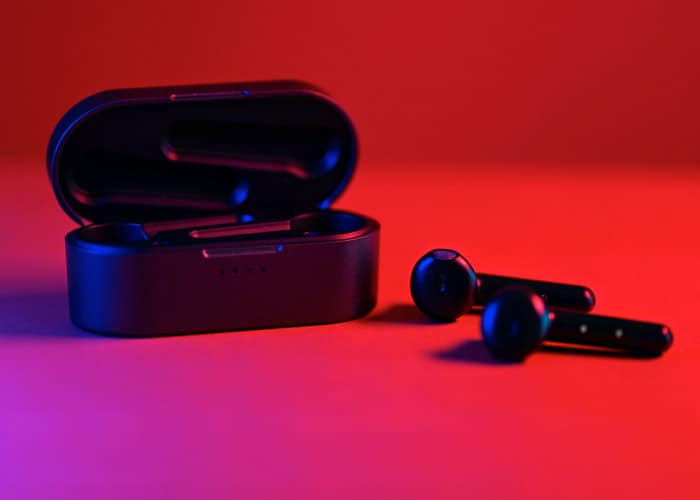16 million adults in the United Kingdom suffer from sleepless nights, with a third of the population say they have insomnia. The research, which Aviva Insurance reported, also states that 67% of UK adults suffer from disrupted sleep, and about 23% manage less than five hours of sleep each night.
With these stats, it is evident that most people struggle to fall asleep each night and might resort to using scientific and non-scientific techniques to help them induce sleep, including meditation, listening to serene music, or listening to binaural beats.
What are binaural beats?
Binaural beats are nothing new. In their simplest form, binaural beats are a method of combining two subtly different sound frequencies to create the sense of a single new frequency tone.
The idea behind these beats is that when exposed to two different frequencies simultaneously, one in each ear, your brain perceives a single tone that is the difference between two frequencies and, in turn, tunes to this frequency.
Using headphones to listen to the beats, each ear receives audio at a different frequency, usually accompanied by peaceful background sounds.
This means that if your right ear receives a 280-hertz tone and your left ear a 300-hertz tone, your brain will process and perceive a 10-hertz tone. If you know a thing or two about audio, that is a pretty low-frequency sound, one that you might not hear.
But the thing is, you do not need to hear the sound for your brain to be impacted by it. You can hear a binaural beat if the frequency of each sound in your ears is less than 1000 Hertz, while the difference between the two sounds is less than 35 hertz (Hz).
How do Binaural beats work?
Rather than the sound itself, binaural beats are a mere perception of sound that your brain creates. If you are exposed to two different sounds at a different frequency in each ear, your brain produces another sound that you can perceive.
When the two ears hear a tone at a different frequency, your brain will perceive additional sound to compensate for sound inequality.
The same brain part helps you determine the location of sound that creates the third sound.
There must be audio coming in each ear to hear a binaural beat, which means if you remove your earphones, you will no longer perceive the binaural beat.
But to fully comprehend how binaural beats help you relax, it is essential to understand how the brain waves function and what they indicate about your state of emotion, consciousness, and mental activity.
How brain waves function
Brain waves are produced from the beats of the electrical activity of our neurons as they interconnect with each other. Our feelings, thoughts, and actions are expressed through constant neural communication. Thus our brain waves are related to how we feel and what we can do at any given time.
There are generally four types of brainwaves, which can help us understand what binaural beats can do.
Gamma (Y) pattern
Known for being the highest frequency of our brain activity with 30 hertz to 50 hertz, Gamma patterns are associated with alertness, problem-solving, and concentration. Specific research shows that listening to a binaural beat at gamma frequencies can help you improve your memory, mood, and cognition.
Beta β pattern
These brain waves are slightly slower than the Gamma pattern, ranging between 13 hertz and 30 hertz. Beta waves are associated with an alert and active mind.
High beta levels are also linked to anxiety. Listening to binaural beats in Beta waves can help you improve mood as well as task performance. Some studies have also indicated that listening to binaural beats in Beta waves can boost your memory and accuracy.
Theta pattern
Your brain creates theta waves during the lightest stage of sleep at a frequency between 4 hertz and 8 hertz, which are associated with drowsiness and meditation. Research indicates that listening to binaural beats at theta frequency can help encourage a meditative state.
This brainwave is linked to deep relaxation and some stages of sleep, including lighter stages of NREM sleep.
Delta pattern
As you slowly transition from light sleep to deep sleep, your brain switches from theta to delta waves. Delta is known for being the slowest brain wave with the frequency of 0.5 hertz and 4 hertz. You can dream at this stage and frequency, and thus listening to binaural beats at 0.5 hertz and 4 hertz can help you fall asleep.
Advantages of binaural beats
Binaural beats are used at different frequencies for different purposes. For instance, when listened to in alpha frequencies, they are believed to induce relaxation, encourage positivity, and reduce anxiety. When listened to in beta frequencies, binaural beats have been found to increase focus and alertness, improve memory, and problems solving.
Can binaural beats help you sleep better?
Although more studies are needed before we could conclude, so far, the findings suggest that binaural beats can help you fall asleep and stay asleep. Research using binaural beats at frequency 3 hertz (delta) indicated that the beats encouraged delta activities in the brain, thus extending the stage three sleep.
Other studies have shown the ability of the beats to encourage better sleep. One study involving football players, who listened to binaural beats at 2 hertz and 8 hertz, boosted sleep quality.
Additionally, other researchers maintain that there is not enough evidence associating binaural beats with reduced anxiety or enhanced sleep. So, it is clear that further studies on binaural beats and their impacts on sleep must be done to have a conclusive answer.
How do you use binaural beats?
Suppose you want to research yourself, test binaural beats and see if it helps you sleep better. Luckily for you, there are plenty of binaural beats online today, and you can easily access them at any time.
When choosing binaural beats, select the ones designed for sleep in delta or theta frequencies. Make sure the audio enters each ear for better results.

 Nectar Mattress
Nectar Mattress 


